Using a proper FPV antenna is the deciding factor in whether or not you will have good reception and ultimately a good flying experience!
FPV antennas come in a few different types:
- Dipole
- Circular polarized
- Helical(only practical for receivers)
- Patch(only practical for receivers)
It’s also important to know what kind of connector your fpv equipment has, and to match it to the connector on the antenna! There are two types of connectors: SMA and RP-SMA. One isn’t necessarily better than the other, but it’s just a matter of design. In SMA antennas, the female plug(the one that the other plug screws on to) has a hole, where the extruding wire from the SMA male plug goes in.
In RPSMA antennas, it’s the other way around. When you buy your equipment, make sure to read what kind of connector your FPV transmitter and receiver has – it’ll always be in the product description, and buy antennas that have the proper plugs.
A word of caution, though, and repeat after me:
I WILL NEVER POWER MY FPV TRANSMITTER WITHOUT AN ANTENNA PLUGGED IN!
If you power it up without an antenna, heat will build up in the transmitter and it’ll burn up!
Best way to mount an antenna
In my earlier builds, I would mount the antenna and video transmitter by pushing the connector of the transmitter through a hole in the top plate of the frame, and then screwing the antenna down on to the connector, so it would be upright.
This is fine, except that if you land/crash upside down at a weird angle, there is a lot of force and tension at the connector itself and I’ve broken a few antennas/connectors this way.
I like to mount my antennas horizontally – the transmitter goes under the top plate(the connector on the transmitter will also be inside the top plate, not sticking out), and only half or 3/4 of the antenna sticks out from behind the copter. You can either leave it straight or bend it up a little.
This offers the most protection to the somewhat delicate connector, and doesn’t really affect range in any way.
Back to antennas, though.
Dipole antennas
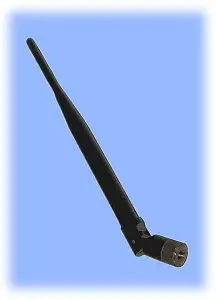
Note: The image is actually a 2.4 gHz antenna – a 5.8 gHz antenna will be smaller.
Dipole antennas, also known as rubber ducky antennas, are very simple – just some coax cable with a bit of metal casing on the end to transmit or receive the signal.
Rubber ducky antennas have very poor range, especially for multirotors, because they can only transmit if they are upright. So if you bank hard to the left or right, or try to do a flip, you’ll lose signal.
These antennas are also very sensitive to multi-pathing, which is when the video signal bounces off of hard objects, so if you fly near a wall(or walls), you’ll lose signal very quick.
Most FPV equipment comes with a rubber ducky antenna out of the box – but you won’t be needing it.
Circular polarized antennas
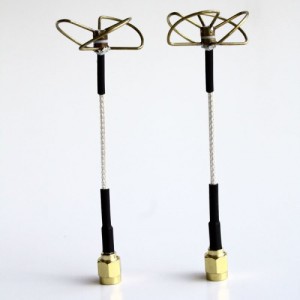
Circular polarized antennas are three-or-four lobed antennas that give much better reception than dipole antennas. They are also known as skew-planar or omni-directional antennas, which means they can transmit and receive equally well in all directions, so no matter what the orientation of your multi-rotor is(up/down/left/right), you’ll still get a good signal.
These antennas are also less susceptible to multi-pathing, so you can fly around walls and trees with better video quality.
There are two types of circular polarized antennas – right-hand and left-hand. Right-hand will only receive signal from a transmitter that’s sending out a signal with a right-hand antenna and no other. The same goes for left-hand antennas.
Circular polarized antennas are the most common(for a good reason) antennas in multi-rotor FPV, and as such they come in many different designs.
There are cheap eBay/Chinese antennas, in which there’s just a connector, coax cable, and the three lobed or four lobed head. There is no protection for the cable or the head. These antennas are very cheap and functional – though their performance may vary every now and then, and the lobes will easily bend out of shape in a collision.
Note: I have since ditched the AOMWAY antennas for TBS and Foxeer antennas, in which the lobes are encased in nearly indestructible plastic.
So here are the best antennas out there:
Foxeer antenna
My new favorite antenna is the Foxeer circular polarized. It gives performance which rivals or is even better than the AOMWAY or Fat Shark antennas, and the antenna is cased in nearly indestructible plastic. I’ve had some pretty rough crashes with these antennas and they are still holding up well.
To compare, I must have gone through at least 3 Fat Shark antennas and 3 AOMWAY antennas. At less than $10 per antenna, the value here is just amazing.
Buy two or three of these and they’ll last a VERY long time.
Check Price at Amazon
TBS Triumph
The TBS Triumph is a premium version of the Foxeer antenna. One reason to prefer the TBS Triumph over the Foxeer is that the Triumph is significantly smaller than the Foxeer and there is less chance the lobe cover will hit the props. I’ve also managed to break Foxeer antennas but have never broken a TBS Triumph.
Check Price at GetFPV
Aomway
A very good brand of circular polarized antennas is Aomway. This is a Chinese brand, but the design is solid, with a protective coating on the wire and plastic reinforcement for the lobes. I personally use used to use the Aomway antennas, and was very happy with their performance. The coating lets me bend the antenna cable into whatever shape I need, and the plastic reinforcement protects the lobes when I crash.
Check Price At GetFPV
Lumenier AXII antennas
If space is really tight, or you want something really tiny that doesn’t stick out as much as other antennas(the Foxeer ones are huge, for example), then you can pick up a Lumenier AXII antenna.
From what I have heard from other reliable pilots, the AXII don’t give quite as much range as the Triumphs or Pagodas(discussed below), they’re still respectable in terms of performance and really awesome for a low profile, unobtrusive antenna.
Especially if your pigtail sticks out on the top plate of your frame, you can use the small nub-style AXII antenna that will not take up any space at all and you may even forget that the antenna is on your quad at all!
Of course, if you mount the antenna so close to the carbon fiber frame, you may sacrifice a bit of range since the waves do not penetrate carbon fiber. That’s why antennas are generally mounted a bit outside the frame so the signals can go out as uninterrupted as possible.
Chack Price at GetFPV
Pagoda FPV Antennas
Pagoda antennas are upgraded versions of circular polarized antennas. They were originally developed by Marten Baart, and they have better range and clearer reception than normal circular polarized antennas. The designs were originally uploaded by Marten Baart for free, but they were a bit of a process to make and assemble, though there are some nice kits available.
Many manufacturers make these antennas now, and they make them for quite cheap! The only disadvantage is that they are not as durable as the TBS Triumph, so you may see yourself replacing them a bit more often.
There is a 3D printed pagoda antenna cover which fits nicely over the lobes and offers some good protection, especially if you print the cover out in TPU or a flexible filament. I use a pagoda on my ImpulseRC Reverb with this 3d printed cover and I must have crashed 20 times onto concrete and hard surfaces without so much as a scratch on the antenna.
Check Price at Banggood
Helical antennas
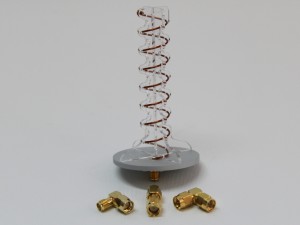
Helical antennas are spring-shaped and have better reception than circular polarized antennas, but with a catch – they have a narrower beam, so they work best if the antenna is facing the transmitting antenna. Helical antennas do receive from the side and behind, but not as good as from the main beam.
Patch antennas(and best patch antennas for diversity)
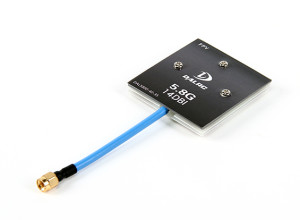
Patch antennas are also directional – they work best when facing the transmitting antenna. If you had a longer range setup(lower than 5.8 ghz) and were flying a plane or multirotor straight away from you, patch and helical antennas are awesome.
But if you are flying a miniquad, in which you’ll be whizzing around in all directions around your receiving antenna, helical and patch antennas alone are not a good idea.
However…
Directional antennas are EXCELLENT as second antennas on your diversity setup.
Helical and patch antennas are excellent to use on diversity receivers. Diversity receivers do what the name suggests – instead of just one signal, they receive two signals(from two antennas), and then show you whichever the better signal is. They will also keep switching between whichever is the better frequency, and it’ll be seamless, so you won’t even realize it.
So if you have a diversity setup with one helical antenna and one circular polarized antenna, you’ll see the helical image when flying in front and the circular polarized image when flying around and behind.
Diversity receivers are cheap for Fat Shark goggles now, such as the RX5808 which can be supercharged with better firmware.
In that case, I prefer the ImmersionRC patch antenna. Make sure you get the correct polarization(right hand or left hand)
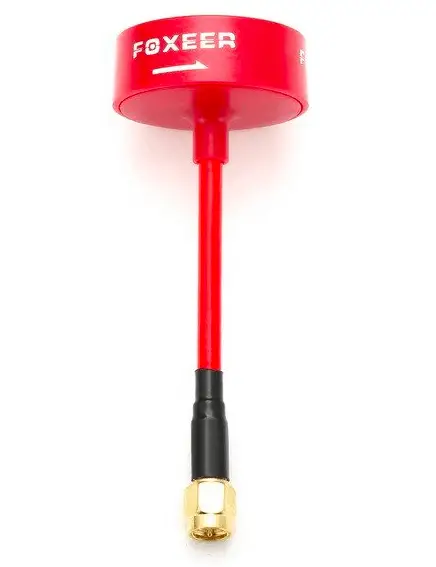

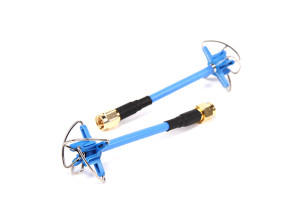
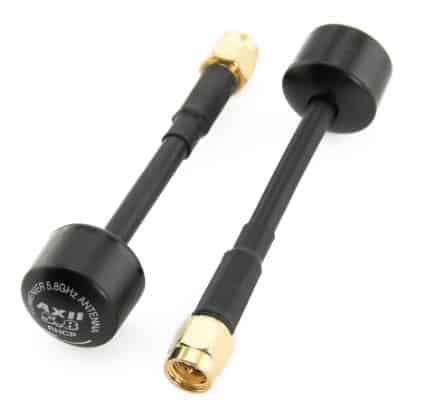
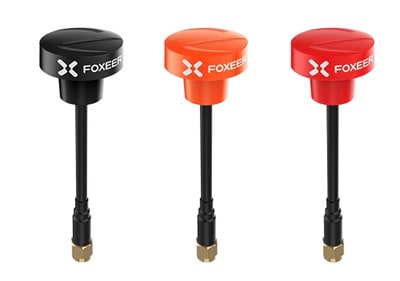
I have yet to find a pagoda antenna that does better than my cheapy Amazon circulars
They don’t do worse for sure.
How to know the left handed and right handed antennas…i got fatshark rpsma.I used to suffle and attach as i wish.How to find the difference to work out as you mentioned above
They are usually a different color. Fat Shark Right hand antennas have black caps and left hand have grey caps.
PLEASE DO A TEST AND ADD THE “Maarten Baard Created” TRIPLE FEED PATCH ANTENNA TO YOUR LIST HERE.
It seems that only Stew and his mates use the antenna and he actually tested it with other patch antennas and switched… But no-one else is talking about them???